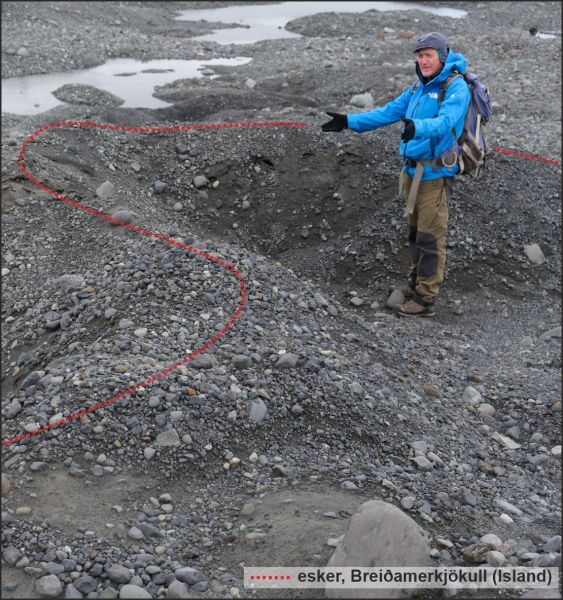Landscape dynamics in the Arctic is among the research interests of Aleksandra Tomczyk and Marek Ewertowski - geomorphologists from the Faculty of Geographical and Geological Sciences. Scientists investigate how quickly the terrain, only recently exposed from under the glaciers, changes. They conduct field studies and analyse archival aerial photographs, satellite images, and data acquired using drones. Their work aims to determine in a quantitative way the landscape’s response to climate change. The results of the research, conducted in collaboration with scientists from the United Kingdom, have been published in an international journal Boreas: Storrar, R.D., Ewertowski, M., Tomczyk, A.M., Barr, I.D., Livingstone, S.J., Ruffell, A., Stoker, B.J., Evans, D.J.A., 2020. Equifinality and preservation potential of complex eskers. Boreas 49, 211-231, https://doi.org/10.1111/bor.12414
Two geomorphologists from the Faculty of Geographical and Geological Sciences (Aleksandra Tomczyk and Marek Ewertowski) participated in a research project led by Professor Robert Storrar from Sheffield Hallam University in the United Kingdom. The scientists conducted research in the central part of Spitsbergen Island (Svalbard Archipelago in the Norwegian Arctic) and southeastern Iceland. The study involved fieldwork - ground-penetrating radar surveys, drone flights, geomorphological mapping - and analysis of historical aerial photographs and satellite images. As a result, detailed geomorphological maps were developed depicting the characteristics of complex esker systems in front of two glaciers: Hørbyebreen (Svalbard) and Breiðamerkurjökull (Iceland), and changes in these landforms over the past seventy years were analysed.
The researchers demonstrated that similar complex landforms can develop in Spitsbergen and Iceland despite significant differences in the nature, thermal conditions, and amount of water flowing on the surface, within, and beneath glaciers. This finding has important implications for interpreting eskers found in glaciated areas during the Pleistocene (the Ice Age) – for example, in Germany, Poland, or Finland. The researchers also defined three criteria that must be met for eskers to be preserved as elements of post-glacial landscapes: (1) channels must contain sufficient material for their filling to be preserved as a landform; (2) there must be a change in drainage system after their formation to prevent destroying the eskers by erosion; (3) there should not be a subsequent advance of a “warm-based” glacier, as it would destroy the eskers. The research results were published in the international journal Boreas: Storrar, R.D., Ewertowski, M., Tomczyk, A.M., Barr, I.D., Livingstone, S.J., Ruffell, A., Stoker, B.J., Evans, D.J.A., 2020. Equifinality and preservation potential of complex eskers. Boreas 49, 211-231, https://doi.org/10.1111/bor.12414
Text: Aleksandra Tomczyk and Marek Ewertowski


